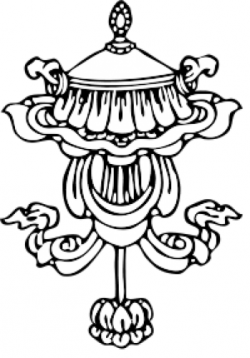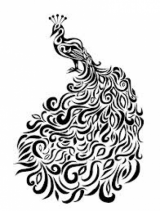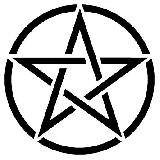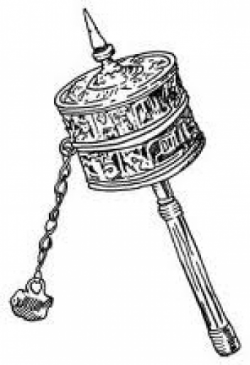Religious Symbols Page #9
This page lists all the various symbols in the Religious Symbols category.

Religious symbolism is the use of symbols, including archetypes, acts, artwork, events, or natural phenomena, by a religion. Religions view religious texts, rituals, and works of art as symbols of compelling ideas or ideals. Symbols help create a resonant mythos expressing the moral values of the society or the teachings of the religion, foster solidarity among adherents, and bring adherents closer to their object of worship.
Symbols in this category:
Orthodox cross
The Orthodox, Byzantine or Russian (Orthodox) Cross is a variation of the Christian cross, commonly found in Eastern Orthodox Churches.
Parsol
The jewelled parasol (Sanskrit: chhatraratna; Devanagari: छत्ररत्न; Tibetan: རིནཆེན་གདུགས, Wylie: rin chen gdugs) or Sacred Umbrella, which is similar in ritual function to the baldachin or canopy.
Patriarchal cross
The Patriarchal cross is a variant of the Christian cross, the religious symbol of Christianity. Similar to the familiar Latin cross, the Patriarchal cross possesses a smaller crossbar placed above the main one, so that both crossbars are near the top. Sometimes the patriarchal cross has a short, slanted crosspiece near its foot. This slanted, lower crosspiece often appears in Byzantine Greek and Eastern European iconography, as well as Eastern Orthodox churches.
Peacock
Although indigenous to the Indian sub-continent, the peacock has spread far beyond its native land and acquired symbolic meaning in a number of diverse cultures.
Pentagram
A pentagram (sometimes known as a pentalpha or pentangle or a star pentagon) is the shape of a five-pointed star drawn with five straight strokes.
Pomegranate
The pomegranate is a fruit with a very long history, both as a culinary staple and as a cultural symbol.
Prayer Wheel
A prayer wheel is a cylindrical "wheel" (Tibetan: འཁོར་, Wylie: 'khor) on a spindle made from metal, wood, stone, leather or coarse cotton.
Quaker logo used by Britain Yearly Meeting 2
A Welsh language logo used by British Quakers
Quaker Star 1
The Quaker star originated in the late 19th century and was adopted by Quaker units serving in non-combatant roles during times of war.
Quaker Star 2
The Quaker star originated in the late 19th century and now exists in several versions, one of which has the dove of peace superimposed.
Rainbow
When it comes to natural phenomena, there are few things more intangible (for lack of a better term) than rainbows: you can’t pick them up in your hand like a rock; you can’t hear them like a thunderclap or a strong wind; you can’t feel them on your skin like rain; and you can’t remove things from them like fruit off a tree. Nonetheless, the rainbow is one of the most ubiquitous natural phenomena known to humanity. Artists have painted them, poets have written about them, and nearly every culture has assigned them powerful symbolic meanings, no matter where on the planet those cultures were located.
Red and black awareness ribbon
The Red and Black Ribbon is used on Atheist Solidarity Day.
Rice (grain)
Throughout East and South Asia, rice cultivation stretches back many thousands of years, and it remains an immensely important foodstuff in both regions today. Over its very long history, this simple grain has acquired a vast number of symbolic meanings. While these connotations vary in specifics from region to region, they also display certain common themes.
Citation
Use the citation below to add this symbols category to your bibliography:
Style:MLAChicagoAPA
"Religious Symbols." Symbols.com. STANDS4 LLC, 2024. Web. 23 Nov. 2024. <https://www.symbols.com/category/5/Religious+Symbols>.

















Have a discussion about the Religious Symbols category with the community:
Report Comment
We're doing our best to make sure our content is useful, accurate and safe.
If by any chance you spot an inappropriate comment while navigating through our website please use this form to let us know, and we'll take care of it shortly.
Attachment
You need to be logged in to favorite.
Log In